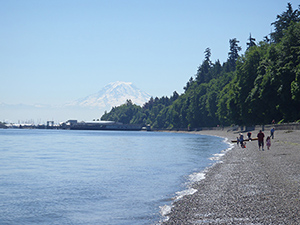Help save Puget Sound
Puget Sound faces many threats from the everyday activities of the 4.5 million people who live on or around the nation’s second largest marine estuary.
Washington residents are proud to live here and enjoy a high quality of life. Everyone can play a part in keeping Puget Sound clean and healthy. Use these educational resources to find out what you can do to help restore and protect our inland ocean.
- Washington Waters: Ours to Protect - Help prevent stormwater pollution. Topics include: manure management, dog poop, yard care, septic maintenance, car maintenance, car washing, and boat maintenance tips.
- Puget Sound Starts Here - All waterways, including storm drains, lead to Puget Sound. Help protect these waterways from stormwater pollution. Interactive features include a quiz, polls, photos, and videos.
- Padilla Bay National Estuarine Research Reserve - This bay is reserved for research and education about Puget Sound. Visit the Breazeale Interpretive Center and learn more about how we are studying and preserving important habitat.
- BEACH Program - We report on bacteria levels at many public saltwater beaches. Check our map before you go, or sign up for email alerts.
- Clean Marina program - Marinas can earn this certification by assessing their operations and making improvements to better protect the environment.
- At Home With Wetlands - A Landowner's Guide
- Slope Stabilization and Erosion Control Using Vegetation - How to use plants to stop erosion on coastal slopes.
- Surface Water and Groundwater on Coastal Bluffs - How to design a drainage control system for your coastal property.
- Vegetation Management Guide - How to manage plants on your coastal bluff.
- Septic tanks - When you take care of your septic system, you are taking care of yourself, your wallet, and your community. Learn more about septic maintenance and protecting Washington waters.
Contact information
Justine Asohmbom
Shorelines and Stormwater Education Manager
justine.asohmbom@ecy.wa.gov
206-594-0009


